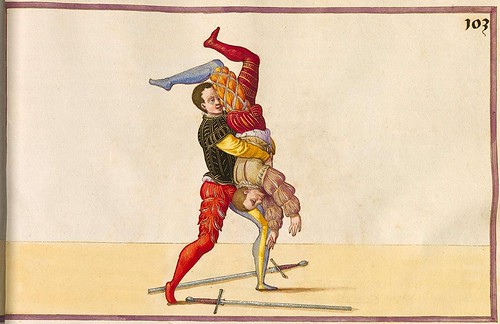







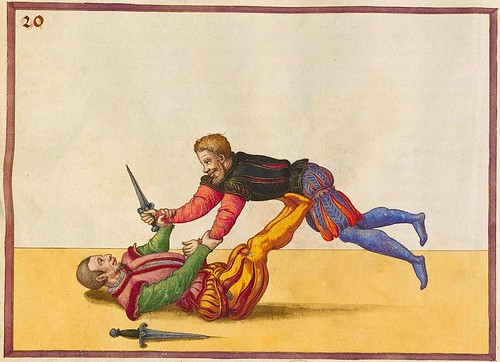
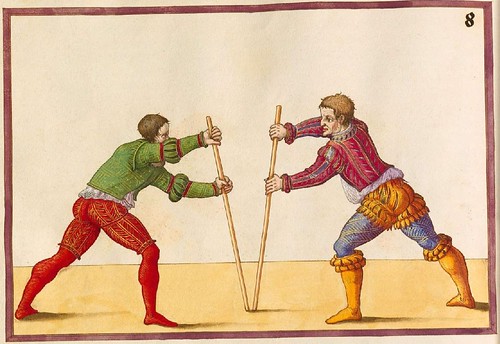
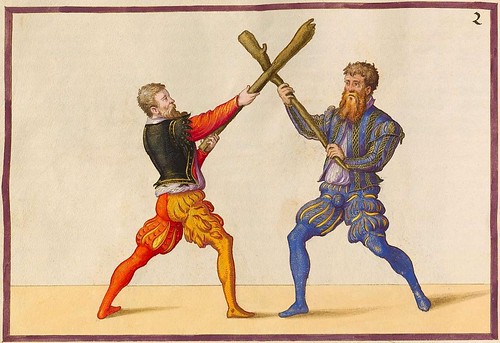
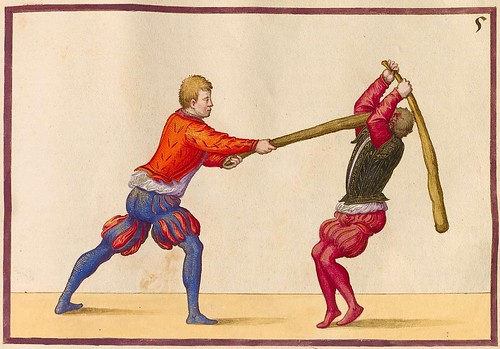
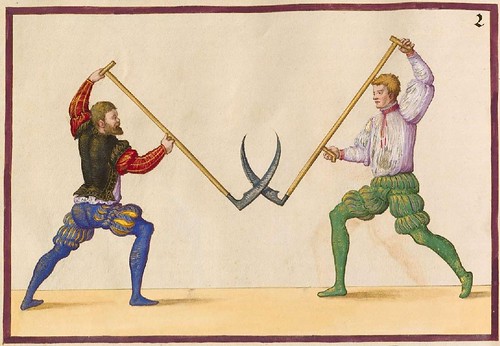




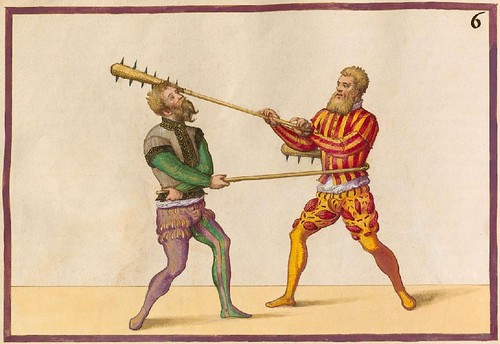
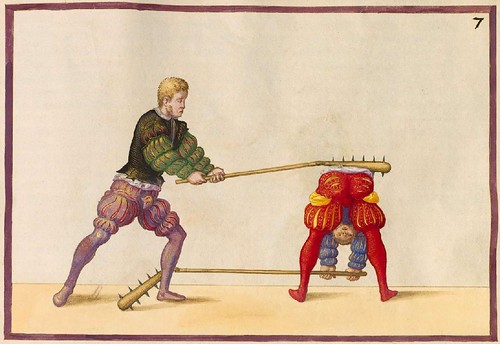

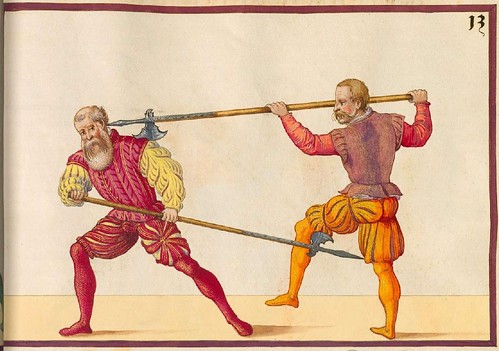

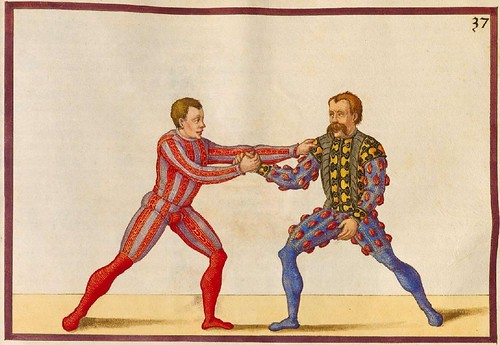
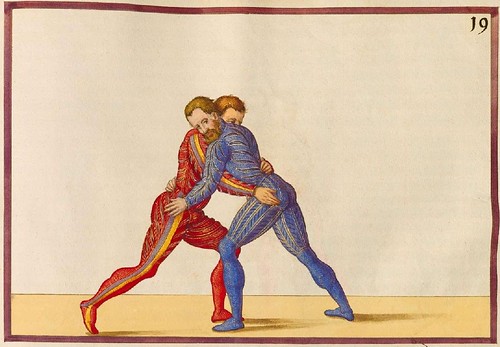
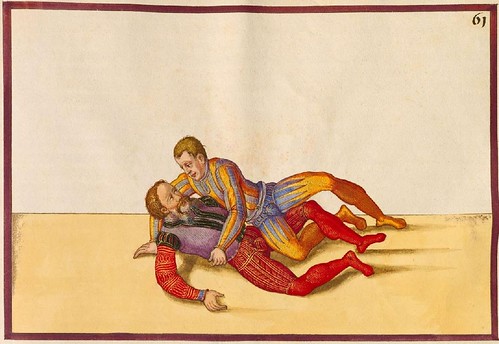
Volume I of 'De Arte Athletica' by Paul (Paulus) Hector Mair (mid-1500s) is online at the Bavarian State Library. It is more than 600 web pages long.
Weapons featured above include the halberd (a variation of pole-axe), long-sword, quarterstaff (maybe short-staff), sickle, dagger, dussack, scythe and a decidedly painful looking enlarged variation on a flail.
There are said to be only three copies of Mair's enormous manuscript, which belongs to the Fechtbücher tradition, left in the world. They are owned by the Bavarian Library (I'll probably sift through Vol. II in the future), Dresden Library* ('Opus Amplissimum de Arte Athletica') and the Austrian National Library ('Opus Amplissimum..' AKA: Codex Vindobensis). The Bavarian version is all in latin (the others are in German and latin) and the handwriting from the volume sampled above is exceptionally neat and legible throughout.
The Mair biography from the Academy of European Medieval Martial Arts (copied at a number of sites, including Wikipedia) [site includes microfilm scans of the Austrian manuscript):
"Paulus Hector Mair (1517–1579) was an Augsburg civil servant, and active in the martial arts of his time. He collected Fechtbücher and undertook to compile all knowledge of the art of fencing in a compendium surpassing all earlier books. For this, he engaged the painter Jörg Breu the Younger, as well as two experienced fencers, whom he charged with perfecting the techniques before they were painted. The project was very costly, taking full four years, and according to Mair, consumed most of his family's income and property. Three versions of his compilation, and one later, less extensive manuscript, have been preserved.
Not only did Mair spend huge sums on his collections and on his projects, he also had a very expensive lifestyle, frequently hosting receptions for the more important burghers of Augsburg. His own income was not sufficient for this, and during many years, he misappropriated funds from the city treasury, with the supervision of which he had been entrusted since 1541. His embezzlements were discovered in 1579, and Mair was hanged as a thief at the age of 62."
- If the Medieval and Renaissance fighting / pounding / stabbing and wrestling arts are your thing, then I strongly recommend looking through the previous posts under the combat tag which include a selection of material from many of the online 'fighting' manuals together with useful background links and information.
- The Association for Renaissance Martial Arts (ARMA) also have a photocopy quality version of what I suppose to be Codex Vindobensis.
- The Austrian Library E-wiki has a German transcription of 'De Arte Athletica'.
- Paulushectormair.com resolves to a blog called Ars Gladiatoris.
I think the site probably derives from or belongs to ARMA{addit: said to be no longer affiliated}. - "In 'Polearms of Paulus Hector Mair' [2008], authors Knight and Hunt make their contribution to the endeavor that Mair began so many centuries ago. Working from both the German and Latin versions of Mair's Opus, they present chapters on combat with the poleax, halberd, spear and shortstaff, and lance and longstaff, with text in the original German and Latin, along with the English translation. The illustrations, taken from the Dresden codices, C93 and C94, have been meticulously restored to give a clear view of the techniques."
- All the images above are approximately half-page details and were background cleaned to one extent or another. There are a few more in the set.




No comments:
Post a Comment